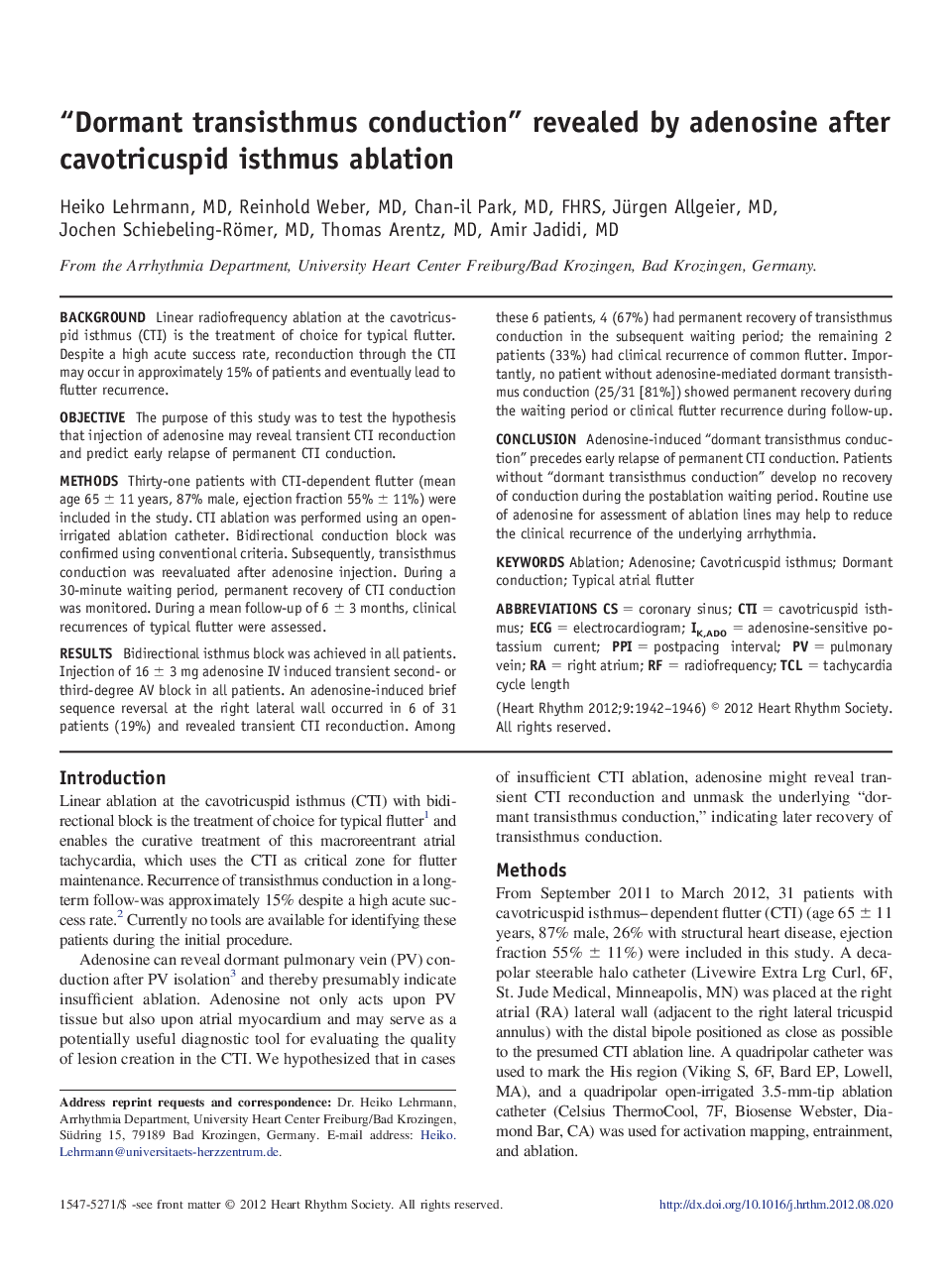| کد مقاله | کد نشریه | سال انتشار | مقاله انگلیسی | نسخه تمام متن |
|---|---|---|---|---|
| 2922751 | 1175855 | 2012 | 5 صفحه PDF | دانلود رایگان |

BackgroundLinear radiofrequency ablation at the cavotricuspid isthmus (CTI) is the treatment of choice for typical flutter. Despite a high acute success rate, reconduction through the CTI may occur in approximately 15% of patients and eventually lead to flutter recurrence.ObjectiveThe purpose of this study was to test the hypothesis that injection of adenosine may reveal transient CTI reconduction and predict early relapse of permanent CTI conduction.MethodsThirty-one patients with CTI-dependent flutter (mean age 65 ± 11 years, 87% male, ejection fraction 55% ± 11%) were included in the study. CTI ablation was performed using an open-irrigated ablation catheter. Bidirectional conduction block was confirmed using conventional criteria. Subsequently, transisthmus conduction was reevaluated after adenosine injection. During a 30-minute waiting period, permanent recovery of CTI conduction was monitored. During a mean follow-up of 6 ± 3 months, clinical recurrences of typical flutter were assessed.ResultsBidirectional isthmus block was achieved in all patients. Injection of 16 ± 3 mg adenosine IV induced transient second- or third-degree AV block in all patients. An adenosine-induced brief sequence reversal at the right lateral wall occurred in 6 of 31 patients (19%) and revealed transient CTI reconduction. Among these 6 patients, 4 (67%) had permanent recovery of transisthmus conduction in the subsequent waiting period; the remaining 2 patients (33%) had clinical recurrence of common flutter. Importantly, no patient without adenosine-mediated dormant transisthmus conduction (25/31 [81%]) showed permanent recovery during the waiting period or clinical flutter recurrence during follow-up.ConclusionAdenosine-induced “dormant transisthmus conduction” precedes early relapse of permanent CTI conduction. Patients without “dormant transisthmus conduction” develop no recovery of conduction during the postablation waiting period. Routine use of adenosine for assessment of ablation lines may help to reduce the clinical recurrence of the underlying arrhythmia.
Journal: Heart Rhythm - Volume 9, Issue 12, December 2012, Pages 1942–1946